Posted In Animals | 22nd January 2025
Animals You’ll Discover at Dublin Zoo
Every visit to Dublin Zoo offers you the opportunity to discover over 400 animals from across the globe. If you’re planning a trip to Dublin Zoo soon, here are eight species you’ll see:
1. Asian elephants
Along the Kaziranga Forest Trail, you will discover a herd of Asian elephants.
Asian elephants are the world’s second largest land mammal (African elephants being the first) and they have a long trunk and wide flat ears. This species of elephant can grow up to nine feet tall and weigh almost six tonnes.
In the wild, Asian elephants live in the tropical forests and grasslands of Southeast Asia.
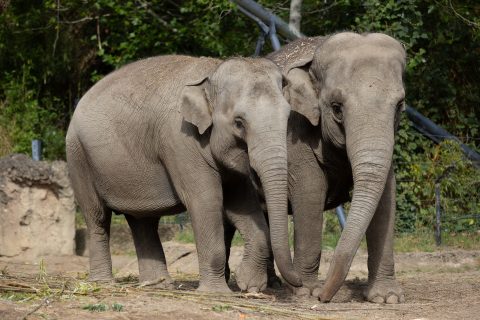
2. Asian lions
As you wander through Asian Forests, you’ll discover the first of the big cat species at Dublin Zoo, Asian lions.
Asian lions are smaller than African lions and they have thicker coats, with the male’s mane being darker and shorter. They also have a fold of skin that runs along their belly, a characteristic that the African lion does not have.
There are only a few hundred Asian lions left in the wild and they only live in the Gir National Park and Sanctuary in India. This park was set up in 1965 to protect the species and there they live in dry deciduous forests and shrublands.
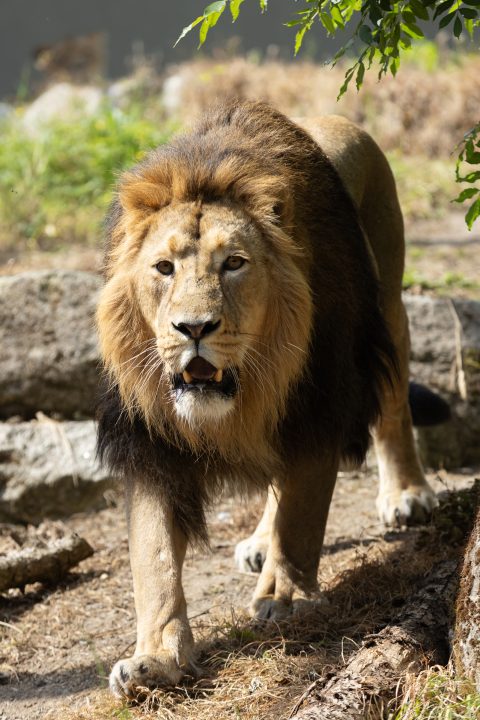
3. Amur tigers
Next to the Asian lion habitat, you’ll encounter Amur tigers, the world’s biggest cat.
Amur tigers have orange fur with thin black stripes and a white underbelly. They used to be known as Siberian tigers, however, their name was changed as their range has been reduced from a large area of Siberia to the smaller area of the Amur River.
An unusual characteristic of the Amur tiger is that, unlike other members of the cat family, they love to swim! They’re often spotted submerging themselves in pools or streams on warm days to cool down.
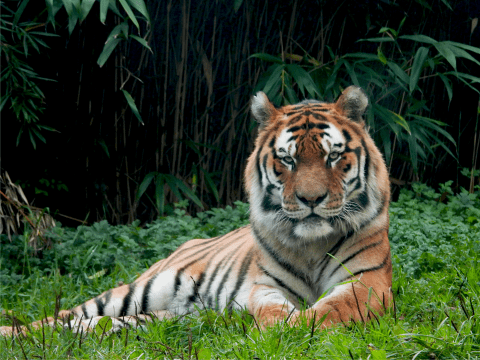
4. Red pandas
A favourite species among Dublin Zoo visitors, along the Himalayan Hills habitat, you’ll see red pandas. These small mammals have a striking reddish-brown coat, with a black belly and legs, and white-lined ears.
Red pandas are impressive climbers and live in trees, where they spend most of their time sleeping and sunbathing.
In the wild, red pandas live in the rainy mountain forests of Nepal, India, Bhutan, northern Myanmar and central China.
This species was once thought to be related to giant pandas and raccoons, but recent research has discovered that red pandas are their own unique family!
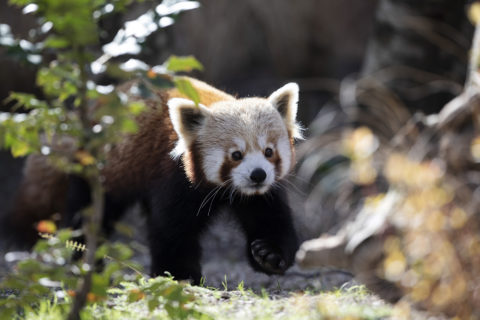
5. Aye-ayes
The Nocturnal House is a unique experience for visitors to Dublin Zoo and is home to aye-ayes, a nocturnal species of lemur that can only be found in the wild in Madagascar.
Aye-ayes are covered in black or brown fur and have large yellow eyes which help them see in the dark.
A unique adaptation of this species is their long, thin middle finger which they use to search for food.
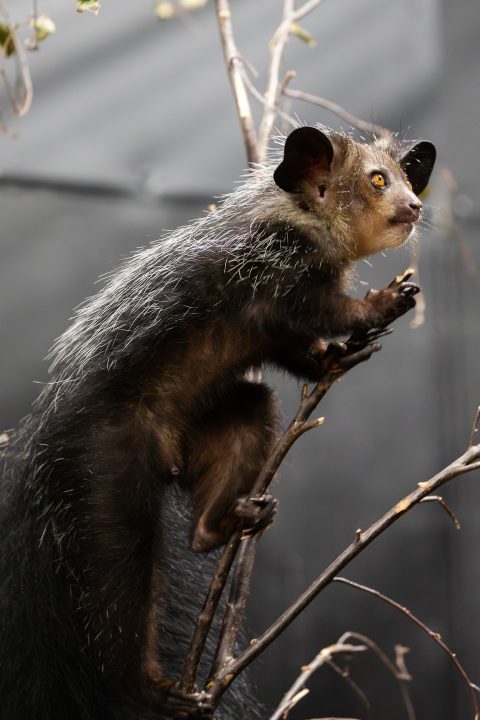
6. Giraffes
In the African Plains at Dublin Zoo, you’ll discover the incredible African Savanna, which is home to a number of species, including the Rothschild’s giraffe.
Giraffes are the world’s tallest mammal in the world, reaching a height of over five metres.
In the wild, giraffes are found in savannahs, forests and deserts across southern, eastern, western and central Africa. Their impressive height and excellent eyesight help them lookout for predators.
Giraffes love to eat and spend most of their day grazing on leaves and buds from shrubs. With the help of their long, purple prehensile (able to grab) tongue, they can strip leaves from the branches of tall trees.
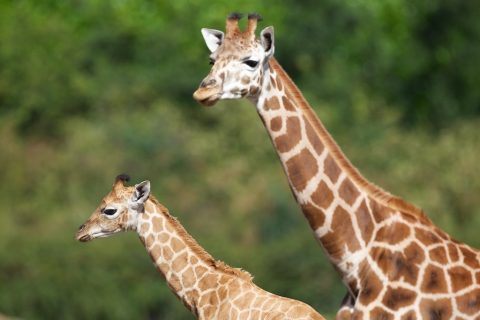
7. Southern white rhinos
On the other side of the African Savanna, you’ll discover Dublin Zoo’s crash of southern white rhinos.
The southern white rhino is the third largest land mammal species in the world and can weigh up to 2.5 tonnes. They have thick grey skin, a wide flat mouth and two horns – a large horn on the front of their face and a smaller horn further up their nose.
In the wild, southern white rhinos are found in Eastern and Southern Africa, living on grassy savannahs and shrublands.
Rhinos love mud paths! On warm days, they can be seen lying in muddy pools to cool off. Getting mucky is excellent for rhino skin as it protects it from strong sun and biting bugs.
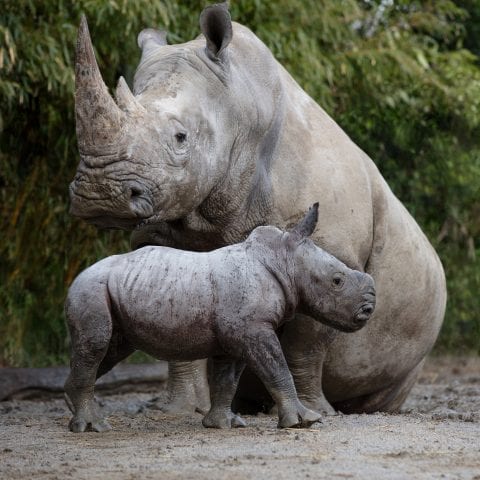
8. Western lowland gorillas
Next stop on your adventure at Dublin Zoo should be the Gorilla Rainforest where you’ll see the Zoo’s troop of western lowland gorillas.
In the wild, western lowland gorillas can be found in tropical rainforests and lowland swampy forests in central and West Africa.
Gorillas can climb trees, but they are more often seen on the ground, exploring for food. The troop is led by the dominant male, known as the ‘silverback’, and he leads the troop in their activities. From eating to moving about the troop’s home range.
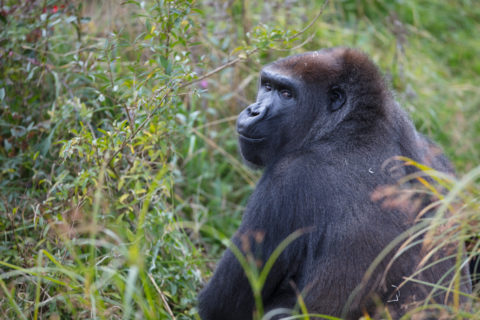
With so many wonderful animals to discover, Dublin Zoo is the perfect place for a great day out. Whether you’re in awe at the beauty of Kushanu’s mane or impressed by Tafari’s breathtaking height, Dublin Zoo provides a unique adventure for all ages.
